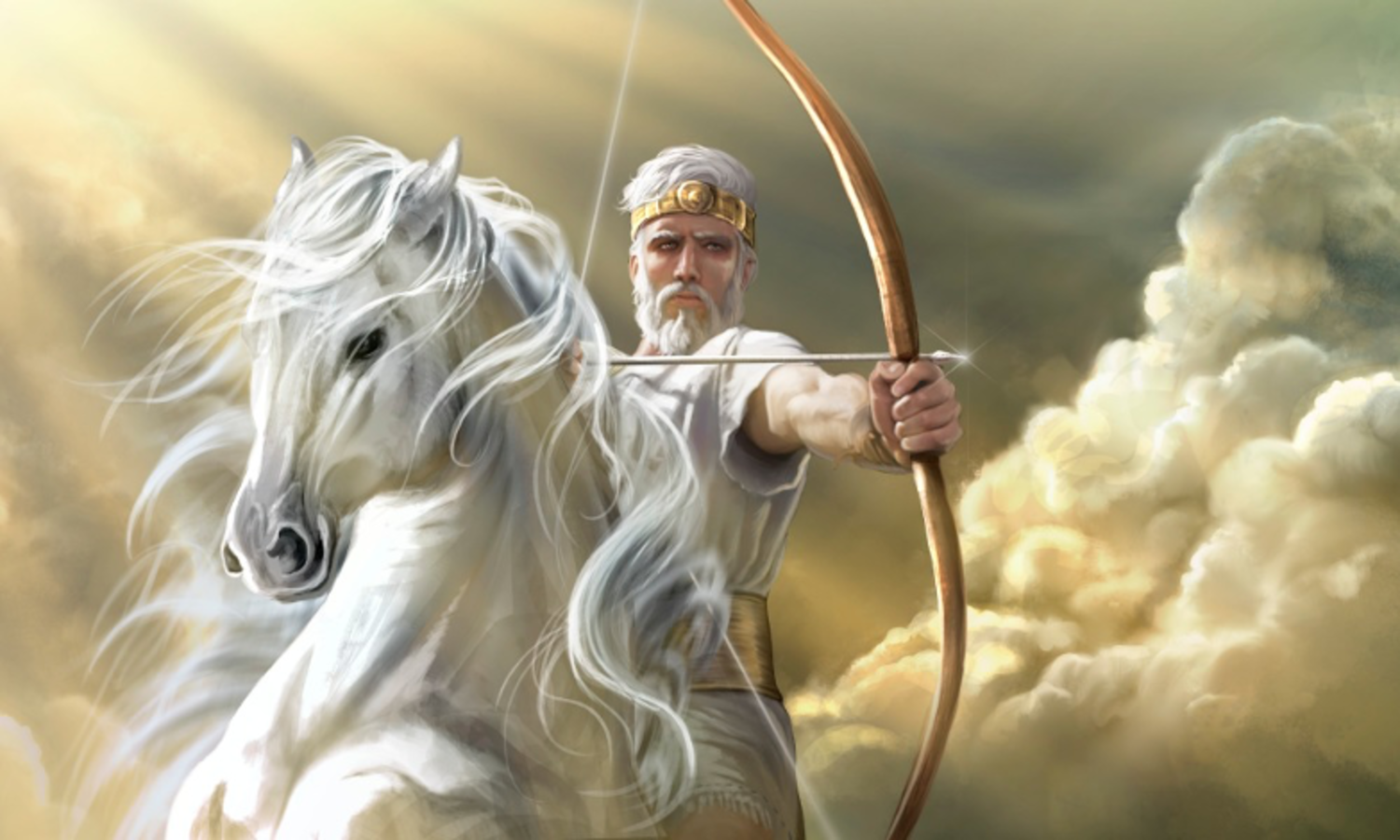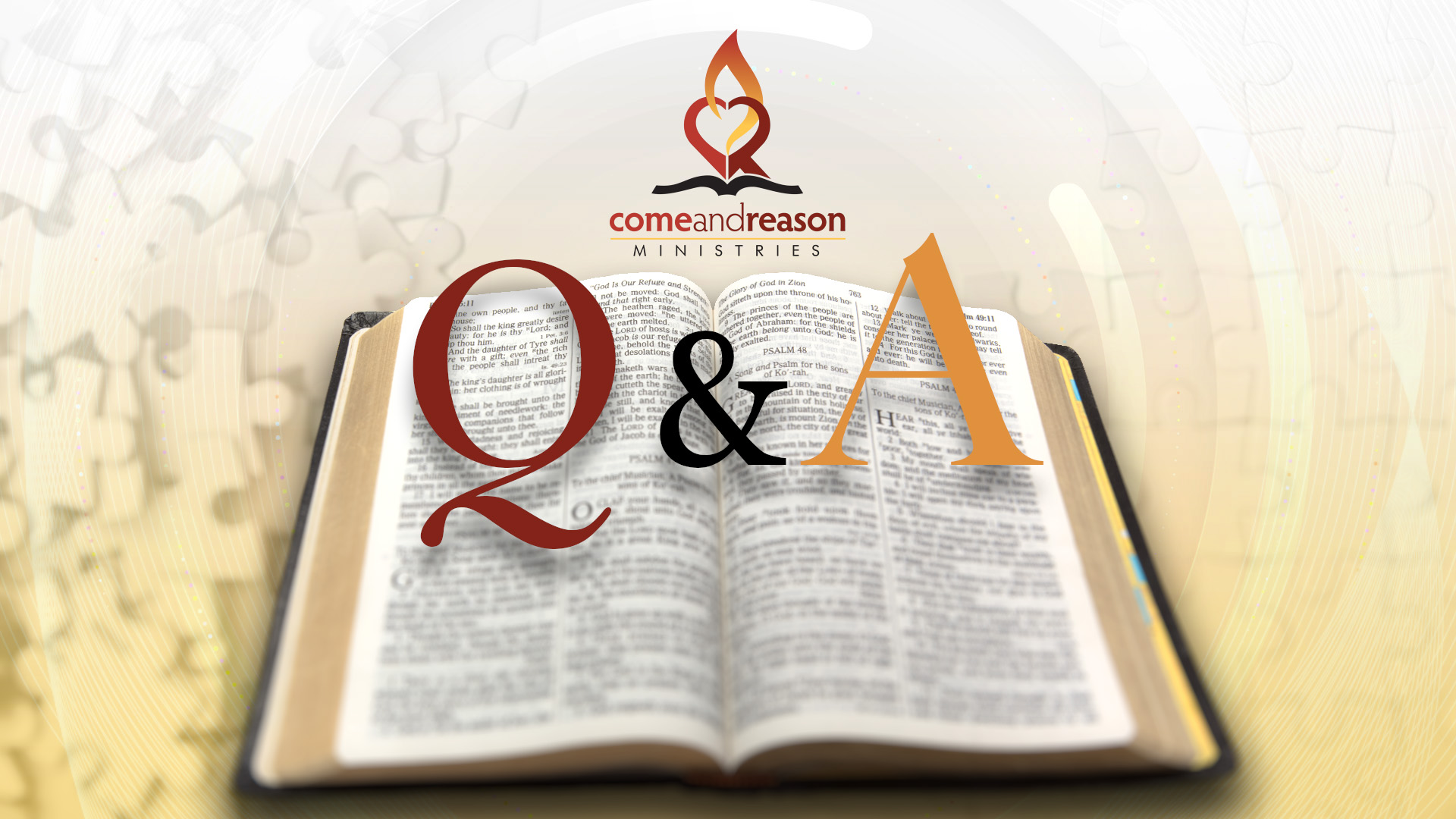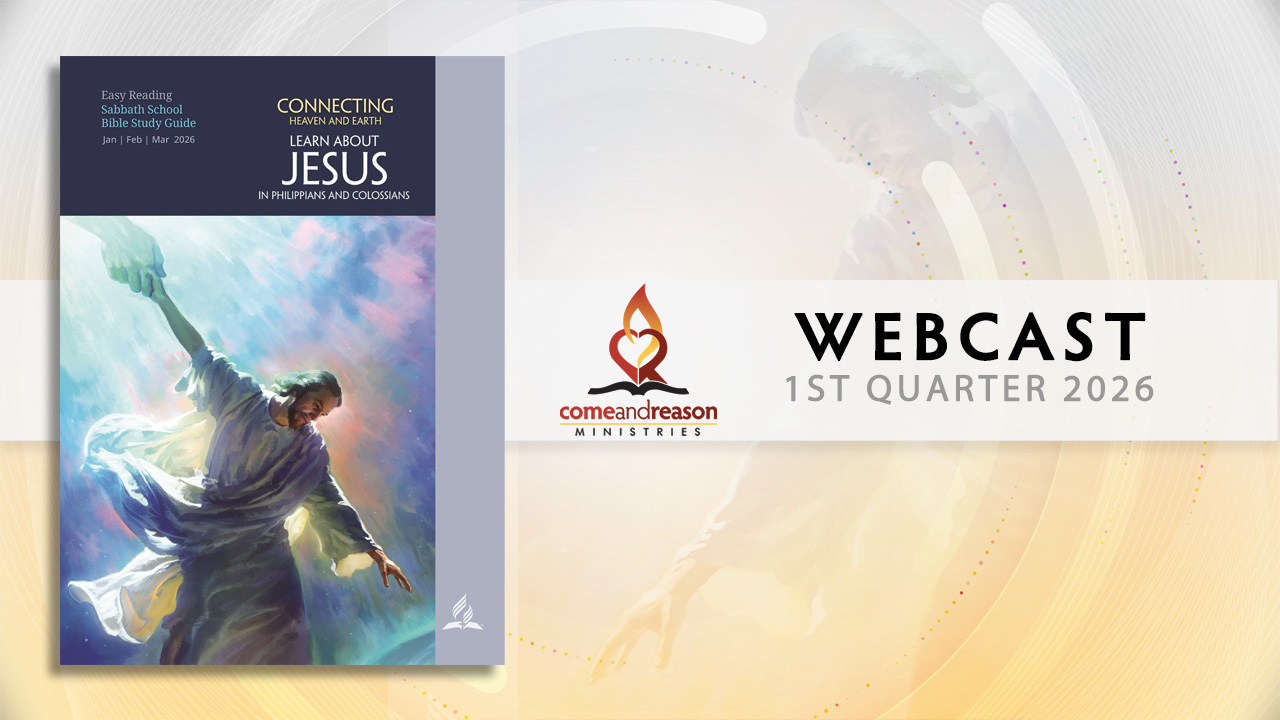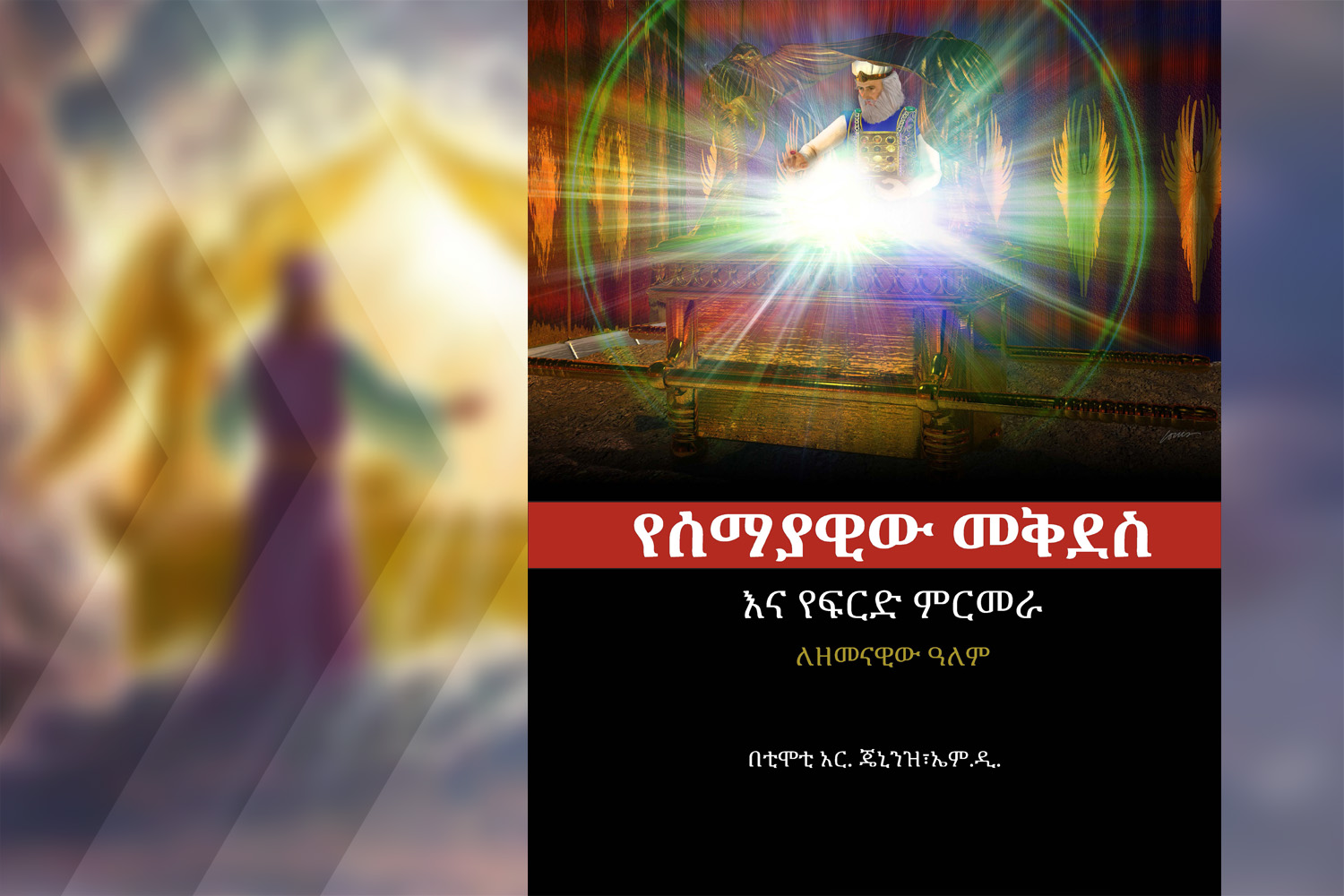By Allen Weber
┬ĀAllen Weber, one of our online members and friends, was asked why I have paraphrased Revelation chapter six the way I have. In answering that question he has done such an excellent job of both explaining my position and also modeling how each of us are to think and reason for ourselves, that I asked permission to post his response here. I hope you find this helpfulŌĆöDr. J.
┬Ā
Are you fully persuaded about the things you believe?
If you are a regular reader of this blog, you likely enjoy and believe what Dr. Jennings teaches. For many of us, his lessons and training have helped to illuminate why God has acted in history in the way that He has. However, do you just accept what Dr. Jennings presents because you believe he is much smarter than you or, perhaps, a deeper thinker than you? Or do you believe what he teaches because it seems logical when compared to the teachings of your church or upbringing?
Or do you accept ideas that are new to you only as you evaluate the evidence for them?
Dr. Jennings not only encourages his audience to be discerning, but he also insists that we do not accept what he teaches unless we have been fully persuaded by the evidence. In his classes, he often refers to Romans 14, where the apostle Paul explains,
One person considers one day more sacred than another; another person considers all days the same. A personŌĆÖs opinion doesnŌĆÖt make a day sacred or not sacred, but each person can only benefit by what they have come to understand and believe for themself, so each person must study the evidence and be fully convinced in their own mind (v. 5 REM).
In other words, Paul taught that we risk damage to our hearts and minds and those of others if we believe without evidence or try to coerce others to simply agree with our own thinking.
But how does this work in ŌĆ£real lifeŌĆØ?
Recently, someone asked a friend of mine why Dr. JenningsŌĆÖ paraphrase of Revelation 6:2 in The Remedy says that the first of the seven seals symbolizes Lucifer, which is at odds with most interpretations. Here is the passage in a typical Bible version:
I looked, and there before me was a white horse! Its rider held a bow, and he was given a crown, and he rode out as a conqueror bent on conquest (NIV).
Here is Dr. JenningsŌĆÖ paraphrase in The Remedy:
I saw that the war began with a rider on a white horse, holding a bow and wearing a crownŌĆösymbolizing Lucifer beginning his war in heaven under the guise of righteousness, yet intent on inciting rebellion and war, and achieving conquest.
They asked my friend to explain how Dr. Jennings arrived at a different conclusion than the usual Adventist interpretation, which is that the first seal represents the church in the apostolic age. My friend told the questioner they didnŌĆÖt know how to explain it. My friend wondered if IŌĆÖd like to take a stab at responding.
When I sent my response the next day, I copied Dr. Jennings and told my friend that I did not think I could say with full confidence what Dr. Jennings believes. I wanted Dr. Jennings to have the opportunity to correct me if I mischaracterized his interpretation of the verse. He wrote back and said that I correctly explained what he believes and then invited me to write a guest blog outlining the rationale for his interpretation of Revelation 6:2 and the principle that others must study for themselves before they come to their own conclusion using this experience as an example. I told him that I would give it a tryŌĆöand that I would need much prayer!
┬Ā
Gathering the Evidence
Here are some resources that helped me in my evaluation of Revelation 6:2:
- Several versions of the Bible
- The writings of Ellen White (available here)
- The Seventh-day Adventist Bible Commentary, 1957 edition
- Revelation of Jesus Christ, Commentary on the Book of Revelation, Second Edition, by Ranko Stefanovic, a professor at Andrews University
- Various internet sites and online commentaries
- comeandreason.com, especially the Bible Study Class archives
- Other trusted, thinking friends. (I believe this is an essential, viable resource, in that openly discussing your current thinking on a topic with others who admire GodŌĆÖs ways and love Him will help you distill your thinking and articulate your views so that you can see flaws or find confirmation that you are on the right path; see Proverbs 15:22.)
My first step was to go through these various sources and take note of anything relating to the question. Once I did that, I began to formulate my own view. Here are some observations and conclusions that led me to believe that Dr. JenningsŌĆÖ current interpretation of Revelation 6:2 is the best one to date.
Before continuing, it should be noted that I cannot find an explicit interpretation of the symbols of this vision in Scripture. Moreover, Ellen White did not specifically discuss the white horse or the rider in her writings. Thus, apparently, we do not have an interpretation that God has endorsed. We might conclude that interpreting this vision is not important to our salvation or our view of God. At a minimum, it does mean that we should not close our minds to differing views, because God has not given a definitive explanation. However, what is needed is an interpretation that improves or expands our knowledge of God and His character. Remembering this principle as I study has helped me understand many things in the Bible that once seemed strange or even contradictory.
┬Ā
A Larger ViewŌĆöDesign and Reality
I was raised a Seventh-day Adventist. I attended church every week and went to Adventist schools from first grade through college. I have been taught Adventist theology all my life, but a lot of what I was taught did not ring true to me. On the other hand, the only thing more absurd than Christianity, as I understood it, was atheism and the theory of evolution. Even though I did not understand what I had been taught about God, I was certain that there is a God. No other explanation adequately explains why we exist. Adventism does make more sense than other theologies that I knew about, but I still did not like it. I didnŌĆÖt care much for the ŌĆ£Adventist God,ŌĆØ even if the Godhead touted the sacrifice one of their members made to save humanity. As a young man of 26, I could not have articulated the way I saw God very well, but what I thought I had learned was that God requires love because He has done so much for us. And if we are not overwhelmed by love for Him, in the end He will resurrect and then destroy us in a lake of fire for our lack of appreciation for Him. And all this was said to be very just.
Then, about 40 years ago, I started listening to Dr. Graham Maxwell, who taught a weekly Sabbath School class. As I listened, I was stunned that he taught things about God that I wished were true but that conflicted with the ideas about God that I had learned. Of course, today I realize that I had been taught many things that are lies and some things that were true but that I had misunderstood. It took me several years of listening to Dr. Maxwell teach about God before I began to unlearn what I had mistaken as the truth about God. Then I was invited to listen to Dr. Jennings and have learned to dive even deeper into the purpose and meaning behind the actions of God in history.
Now when I study the Bible, I always ask, ŌĆ£What does this passage teach me about God and His character?ŌĆØ I have found a lot of information and a lot of differences among interpretations regarding the first seal in Revelation 6:2. When this happens, I evaluate the different interpretations by considering the implications they would have on the idea of a God who has built love into the design of His universe. The Bible is a history of GodŌĆÖs conflict with Satan. If an explanation of Scripture does not vindicate God and refute Satan’s accusations, it likely is either wrong or needs to be reworked. In the case of JenningsŌĆÖ paraphrase of this verse, his conclusion is that the first seal represents the first battle in the Great Controversy. Here it is again from The Remedy paraphrase:
I saw that the war began with a rider on a white horse, holding a bow and wearing a crownŌĆösymbolizing Lucifer beginning his war in heaven under the guise of righteousness, yet intent on inciting rebellion and war, and achieving conquest.
Remember, heavenly beings did not explain this vision to the prophet, as they did with DanielŌĆÖs visions. We cannot say emphatically that one explanation is right and another is wrong. Therefore, we must let each person be ŌĆ£fully persuadedŌĆØ about what this seal and the other seals mean. With that in mind, here is a quick summary of Dr. JenningsŌĆÖ beliefs that lead to his interpretation of the seven seals symbolizing seven periods in the history of the Great Controversy and his belief that the first seal represents the commencement of the conflict:
- According to the ŌĆ£Preface to RevelationŌĆØ in The Remedy, the ŌĆ£general theme [of Revelation] is that of the conflict between Christ and Satan.ŌĆØ
- The scroll/book introduced in Revelation chapter 5 is a ŌĆ£pre-recordŌĆØ of the Great Controversy; Dr. Jennings says, ŌĆ£My view is that the book is the book of GodŌĆÖs foreknowledge, of what would happen before anything was created, which God recorded and sealedŌĆØ (ŌĆ£The Seven Seals,ŌĆØ Bible Study Class, 1st Quarter 2019, Lesson 5). Here is a link to Dr. JenningsŌĆÖ notes for this class.
- Each seal is a symbolic representation of the different ŌĆ£erasŌĆØ of the Great Controversy (GC). Unsealing them will allow humanity and the onlooking universe to compare what was in the sealed scroll with the actual history of the GC.
- The vision seen when Jesus breaks the first seal symbolically reveals the beginning of the GC: Satan claiming he is the equal of Michael the Archangel and going forth to prove it.
- When the following seals are opened, each seal reveals further chapters of the GC.
As you will see, I think that Dr. JenningsŌĆÖ interpretation is both valid and, most likely, the correct one, fitting the overall theme of the Bible better than any other analysis IŌĆÖve seen to this point.
┬Ā
What Is Your Premise?
According to Dr. JenningsŌĆÖ Lesson Notes, the main underlying premises that lead to his explanation of the meaning of the seven seals are:
- The Bible is a revelation of the truth about God, how He governs, and what His character is like.
- The general theme of the book of Revelation is the conflict between Christ and Satan.
- The seven seals conceal what is in the scroll that God is holding in Revelation 5:1.
- Breaking the seals will reveal the contents of the scroll.
In contrast, the premises of those who believe that the first seal represents the emerging Christian church seem to be:
- The first half of Revelation is a representation of the period from ChristŌĆÖs ascension to heaven following His resurrection to His return at the Second Coming.
- The seven seals cover the same time periods as the seven churches.
- Revelation 4ŌĆō8 is an expansion of and development of the theme of overcoming by Christ and then by humanity in Revelation 3:20, 21.
The interpretation following from these premises seems to be the most widely accepted one and, unless they have been given specific prophetic light from Ellen White, most Adventist scholars derive their interpretation from traditional biblical scholars.
These are vastly different starting points!
The Remedy focuses the readerŌĆÖs mind on the contents of the scroll fastened shut by the seven seals.
But most Adventist scholars concentrate on the historical events that led to the establishment of the Seventh-day Adventist denomination in 1863. In this interpretation, the scroll almost ŌĆ£disappearsŌĆØ in relevance. The emphasis is on the seven seals, and some scholars even assert that the scenes presented by the seals have nothing to do with the contents of the scroll.
Neither the breaking of the seven seals nor the events that follow constitute the contents of the sealed scroll of Revelation 5. The scroll was not opened and its contents disclosed until all seven seals were broken. According to George E. Ladd, the breaking of all seven seals is ŌĆ£preliminary to the actual opening of the book and the events of the end.ŌĆØ Or, as Kenneth A. Strand explains, the opening of the seven seals represents ŌĆ£the steps or means by which God through Christ prepares the way in history for the opening and reading of ŌĆ” the book of destiny at the judgment in the eschatological consummationŌĆØ (cf. Rev. 20:12)ŌĆØ (Revelation of Jesus Christ, p. 217).
With this explanation, the question arises whether the scroll and what is written in it are important. Dr. JenningsŌĆÖ view is that it is essential. The scroll was recorded before SatanŌĆÖs defection and prior to creation. When unsealed the contents reveal that He knew the course the GC would take and the ramifications resulting from ruling the universe by unselfish loveŌĆötwo key accusations of His enemy. This makes the scroll a critical piece of evidence in GodŌĆÖs victory in the GC.
In the historic Adventist view, despite the fact that John takes time to say there is writing on the scroll, the scroll is only seen as symbolic of JesusŌĆÖ claiming His throne and ancillary to the meaning of the vision John was given. Why Jesus may claim His throne must be the subject for another time, but viewing the Bible through the lens of design law means we see the Bible as a record of the GC and an explanation of reality. Without seeing through this lens, the highly symbolic nature of the visions of Revelation is often treated too literally. God is seen as rightly exercising His power in majestic and royal ways and we are taught not to question whether an interpretation is logical because He is the Creator. What’s more, we are given to understand that God is so far above us that we are not meant to understand. But if we do not use our reason or remember to put the Bible history into the setting of the GC, the false picture of an arbitrary, unapproachable God is reinforced instead of it illustrating that an ideal universe operates on the law of love and that God allows complete freedom to every created being.
┬Ā
Evaluating the Evidence
Next, I read Revelation 5 to try to learn why there was a sealed scroll and why those seals were being broken in chapter 6. As I did, I realized there are numerous clues to what is in the scroll, why it is sealed, why only Jesus could break the seals, and why the message of the scroll is so important. I was surprised by what I found, and now I wonder why the interpretation that the first seal represents the inauguration of the war in heaven, which triggered the Great Controversy, is nearly unique to Dr. Jennings.
So, letŌĆÖs now consider what I found in Revelation 5 that helps make the meaning of the seals become clear. Here are some things we can ascertain about the scroll just from reading that chapter:
- The 24 elders (healed humans representing all of humanity), the four living creatures (symbolic representatives of all beings created before humans), and millions of angels (in existence before the war with Satan began), as described in Revelation 4, are around the throne. They see God holding the scroll in Revelation 5:1. The fact that there is writing already on the scroll implies that it was written previouslyŌĆömaybe long before any created being existed.
- The contents are written on both sides of the parchment, suggesting that it supplies vast amounts of information or evidence of something.
- Learning the contents of the scroll seems imperative and significant to those looking on. John was heartbroken as it became clear to him that no one could open it, showing that without the knowledge of what the scrollŌĆÖs contents teach or prove, there would be grave consequences.
- Those interested in the contents of the scroll are on GodŌĆÖs side in the conflict, and most of them are not from Planet Earth. This tells us that they believe the knowledge found in the scroll will be valuable to their decisions and beliefs. Humanity wants to know why God acts as He does, but Scripture makes it clear that many other intelligent beings have similar questions (1 Corinthians 4:9; Colossians 1:20).
- One of the elders points out that Jesus, symbolized by a lion who turns out to be a slain sacrificial lamb, can now open the seals on the scroll because of His victory in His mission to Earth. This means that what Jesus did by becoming a man is the key to knowing that the scroll has value to us. If He had not succeeded in His mission to develop a perfect sinless human character (Hebrews 5:8, 9), reveal what a God of love really looks like (John 17:6), and show humanity how to live in complete dependence on the Holy Spirit (John 3:6, John 14:17) the plan of salvation would have failed. The contents of the scroll would be invalid. If it describes the plan, put in place before the world was made (Revelation 13:8), but Jesus failed, it would be wrong and consequently its claims worthless. GodŌĆÖs love and the methods of governing that He claims to use were demonstrated by JesusŌĆÖ life and death. Without that reality, we would be left with empty, meaningless declarations in that scroll, and Satan could claim victory.
- When John looked at the One taking the scroll from God and opening the seals, he saw a lamb that had been sacrificed but was now standing in a position of authority in the throne room. This clearly represents Jesus after His mission to our planet. He is the only being in the universe who has ever used His unlimited and underived power solely to benefit others. Jesus, with the full authority and power of the Godhead (John 13:3), allowed Himself to be destroyed by the very ones He wanted to save. But if His mission to this planet answered every question and provided all the evidence needed to end the GC, what value would the scroll being opened during His coronation have? The implication is that the scroll is additional information and ammunition in the war between good and evil.
- The rest of chapter 5, starting at verse 9, describes the rejoicing that comes from learning that the scroll will be opened, signifying there is a victorious answer to the horrific war that Satan started and has prolonged. What Christ did while on Earth is what makes Him the key to unlocking the knowledge in the scroll. This suggests that the contents of the scroll will be crucial information needed to put the GC to rest forevermore.
Based on these clues, what can we determine? Even after the proof of JesusŌĆÖ life, death, resurrection, and ascension, what is still missing to defend against SatanŌĆÖs accusations about GodŌĆÖs character of love? What can destroy the arguments against GodŌĆÖs claims about how love and freedom work? One of Dr. JenningsŌĆÖ favorite Bible passages and a key to understanding how the GC will be won at last is 2 Corinthians 10:3ŌĆō5:
For though we live in the world, we do not wage war as the world does. The weapons we fight with are not the weapons of the world. On the contrary, they have divine power to demolish strongholds. We demolish arguments and every pretension that sets itself up against the knowledge of God, and we take captive every thought to make it obedient to Christ (NIV).
The war of which we are a part and the battles we are fighting described in this passage are about what God is like and how He has conducted Himself during the GC. JesusŌĆÖ life and death were certainly major evidences that God is love and that He can be trusted, but some questions remain. For instance, did God always know the ramifications of creating His beings free? If He did not, then He is not wise, all-knowing, and trustworthy. How can the scroll be the ultimate tool that brings this conflict to its end and proves GodŌĆÖs case for a universe governed by unselfish love? Revelation 13:8 says that Jesus was slain ŌĆ£from the foundation of the worldŌĆØ (NKJV). To me, this means that He knew before He created Earth that He would have to die for us. The Remedy paraphrases this idea by saying that the Book of Life belongs to ŌĆ£Jesus the Lamb who committed himself to be the Remedy to sin before the world was created.ŌĆØ The scroll God is holding in Revelation 5 cannot be the Book of Life that chapter 13 says belongs to Jesus. That book is used to record the names (or characters) of those who choose to allow God back into their hearts; these records of saved souls were added as the GC played out. But the scroll that was filled on both sides of the parchment with information was written and sealed long before. Nothing could have been added to it during the war.
In my view, as the seals were broken and the scrollŌĆÖs contents revealed, the information in the scroll served as confirmation for everyone in that throne room scene, confirmation that they were desperate to learn. The scroll contains the entire story of the GC, but it was all written down by God before it happened. It is proof that God always knew the ramifications of the law of love. It shows that He knew since before Earth was created that love and freedom would turn out to be the only way to govern if God wants His created beings to be more than robots and the universe to eventually have peace and unity.
Next, the fact that Jesus committed Himself to remedy our situation before it ever happened could be proven if the scrollŌĆöwritten before Satan started his war, before mankind sinned, and even before this world was createdŌĆöheld a record of GodŌĆÖs rescue plan, written in detail, prior to what has happened after Satan mutinied against His Creator. It would also show beyond all doubt that God knew all along the risk He was taking, how He would remedy the problem, how He would win the war, and how it would all turn out in the end.
If this is the meaning of the coronation scene in chapter 5, it makes it clear why Dr. Jennings interprets the first seal as the beginning of the GC. It fits perfectly with GodŌĆÖs way of presenting evidence and leaving us free, evidence that has slowly been unsealed since JesusŌĆÖ ascension. The breaking of the first seal unveils the first event that God recorded in the scroll in pre-history, proving once again that He really is who He says He isŌĆöour all-knowing, loving Designer who created us to love while leaving us free to choose whether to return His love and share it with our brothers and sisters.
One last thing: The best way to share that love is to act on it. Providing a fantastic interpretation of the vision of the seven seals will not win anyone over to GodŌĆÖs love and methods; rather, loving them the way God would if He were here on Earth will.
┬Ā
┬Ā











 using your credit or debit card (no PayPal account needed, unless you want to set up a monthly, recurring payment).
using your credit or debit card (no PayPal account needed, unless you want to set up a monthly, recurring payment). instead?
instead?